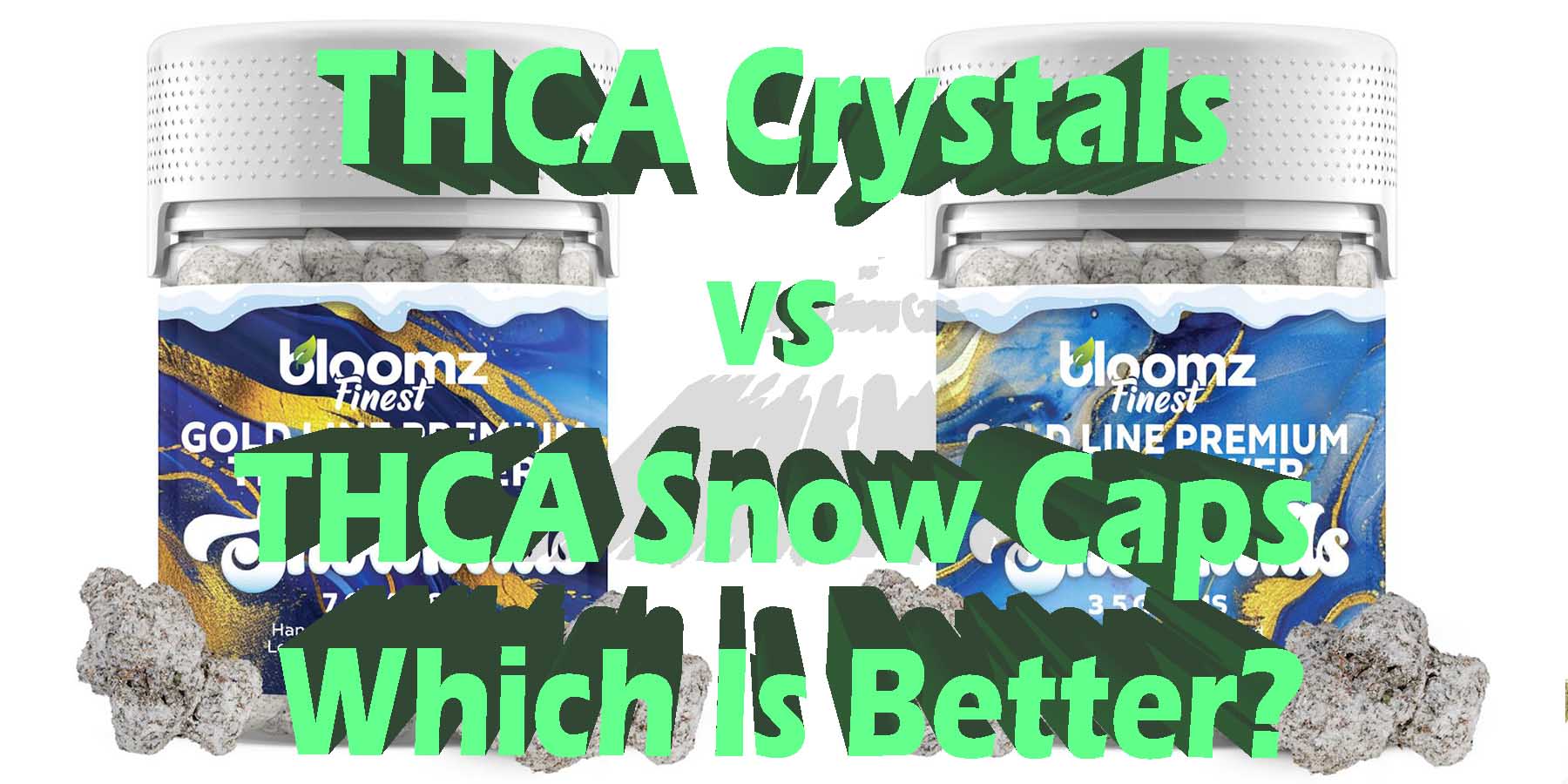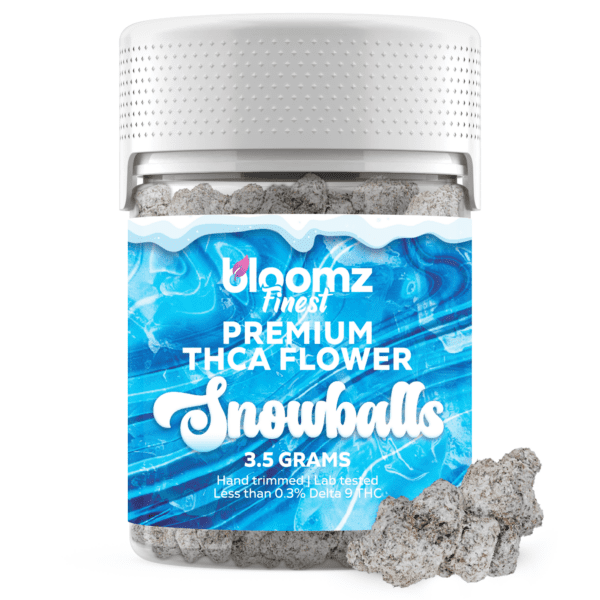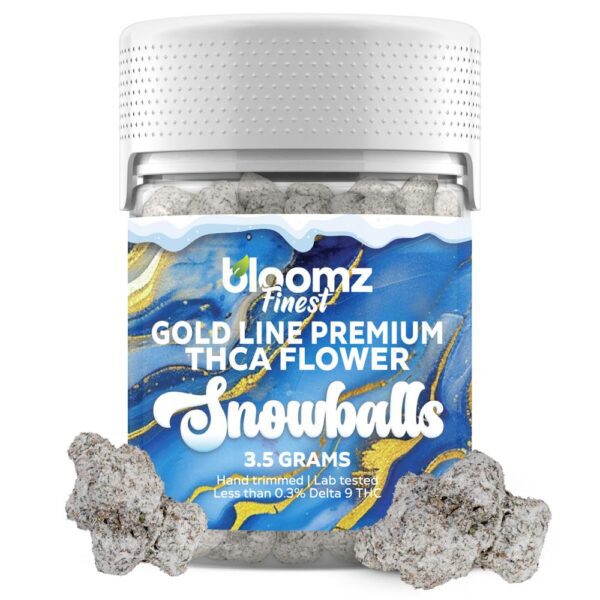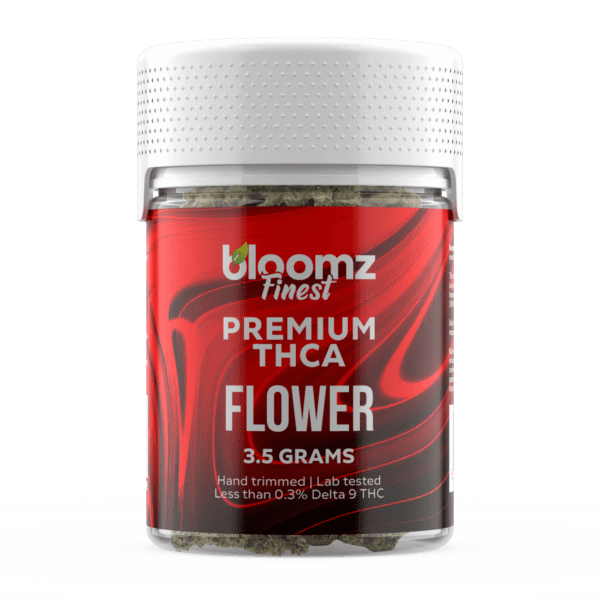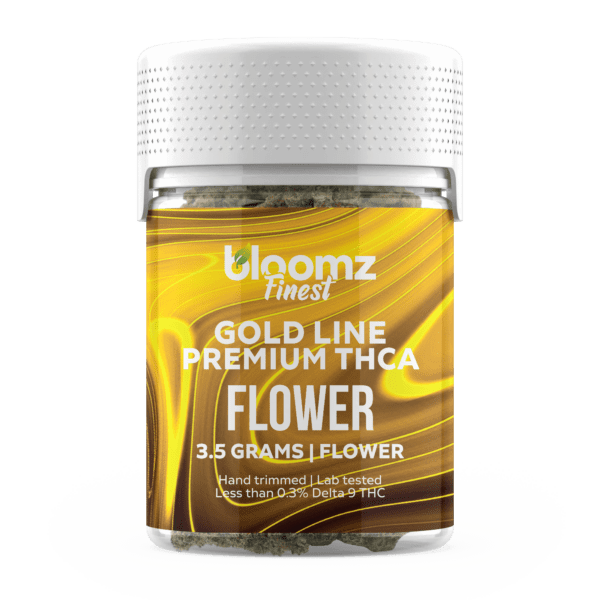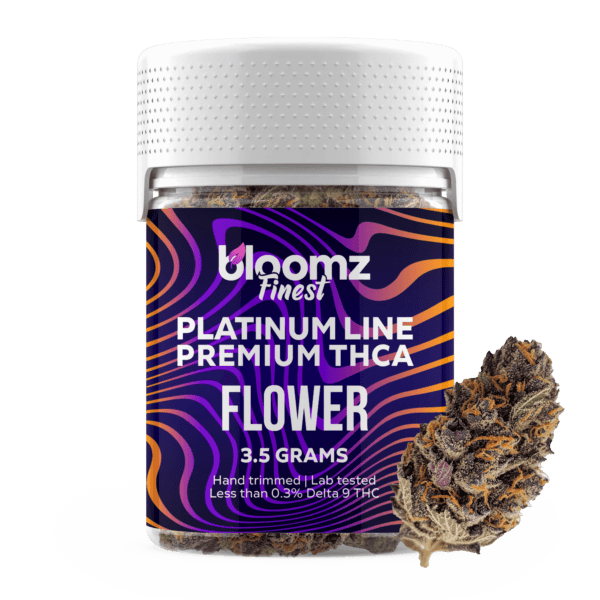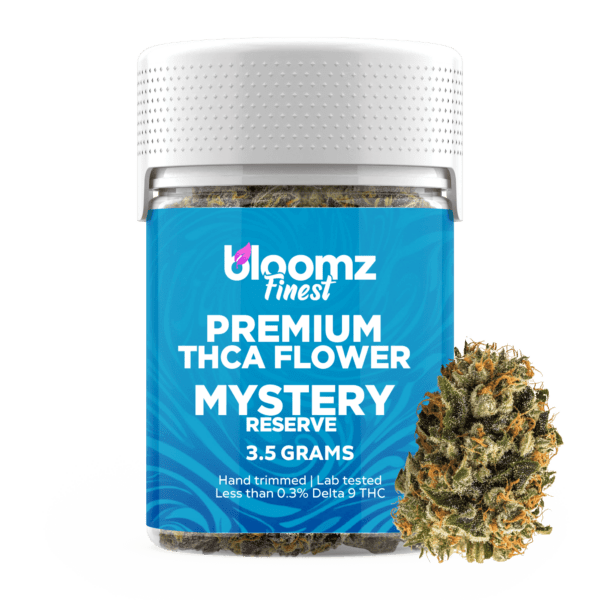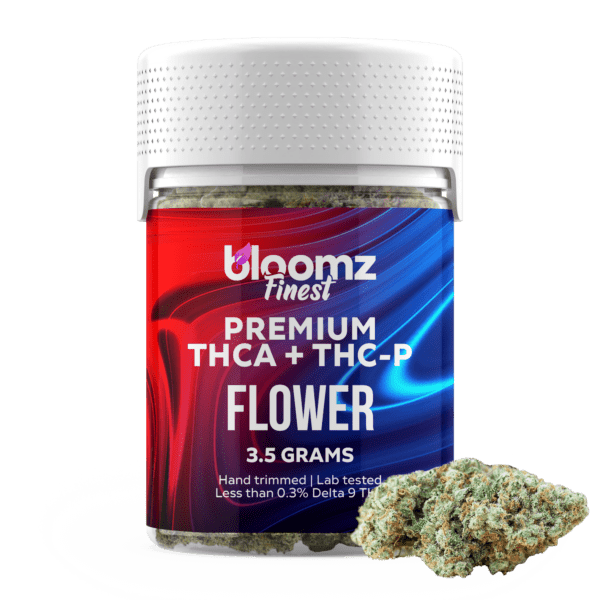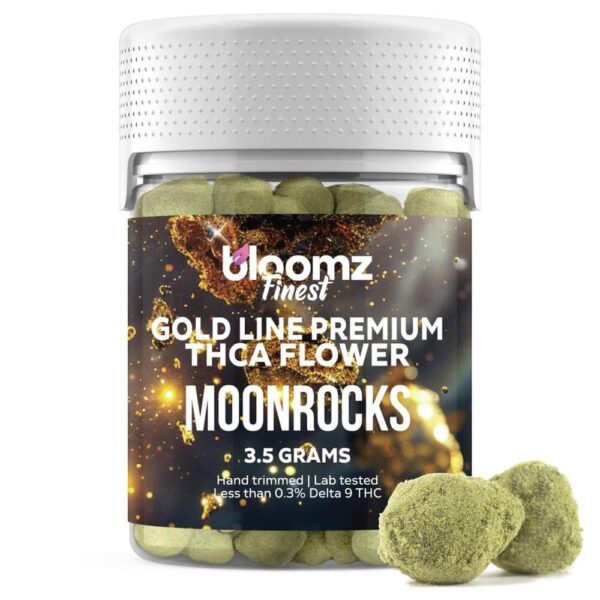Maybe you’ve noticed that an influx of THCA flower companies are enhancing their buds with various types of concentrates and extracts, in an effort to offer higher-potency flower than ever before. Two of the most popular types of enhanced products are snow caps (also known as snowballs) and crystals, both of which enhance the THCA. So, we would like to compare the two, in order to see which type is the winner.
TO BUY THCA FLOWER SNOW CAPS CLICK HERE
-
Product on sale
 THCA Flower – Snow Caps$45.99
THCA Flower – Snow Caps$45.99$89.99
Contender #1: THCA Crystals
THCA crystals, or tetrahydrocannabinolic acid crystals, are a refined product derived from cannabis plants. THCA is the non-psychoactive acidic precursor to THC (tetrahydrocannabinol), the compound primarily responsible for the psychoactive effects of cannabis. THCA itself does not produce a “high” effect until it is decarboxylated, which involves heating the compound to convert it into THC. Users often consume THCA crystals by dabbing or vaporizing to activate the THC.
THCA crystals often appear as transparent or white crystalline structures, resembling quartz or sugar crystals. These crystals are also among the purest forms of cannabis concentrates, typically containing over 90% THCA.
THCA crystals are typically produced through extraction processes that isolate the compound from the cannabis plant matter. These processes can include the use of solvents like butane or CO2, followed by purification steps to produce the nearly pure crystals. The resulting product appears as small, crystalline structures that are often very potent in THCA content.
Here’s how THCA crystals are typically produced:
- Extraction: The process begins with the extraction of cannabinoids from cannabis plant material using solvents. Common solvents used for this purpose include butane, propane, ethanol, or CO2. Each solvent can affect the purity and form of the final product differently. The extraction process aims to pull out the cannabinoid-rich oils from the plant material.
- Purification: After extraction, the cannabinoid-rich oil must be purified to isolate THCA specifically. This often involves winterization, which removes fats and waxes by mixing the extract with alcohol and freezing it, causing impurities to precipitate out. The mixture is then filtered.
- Crystallization: The purified extract undergoes a crystallization process. This involves slowly heating and cooling the extract under controlled conditions to promote the formation of THCA crystals. This step may also involve the use of solvents that help in the crystallization process.
- Separation and Drying: Once crystallization occurs, the crystals are separated from the remaining liquid (often called the mother liquor). The crystals are then collected and dried to remove any residual solvents.
- Curing: Finally, the crystals may be cured, which can involve additional drying or aging processes to achieve the desired purity and potency.
Note: The production of THCA crystals is a complex process that requires careful control of temperature, solvent mixtures, and timing to achieve high purity and yield.
Who are THCA Crystals Meant For?
Due to their high potency, THCA crystals are generally recommended for experienced cannabis users. Also, because of their purity and consistency, THCA crystals can be used by those who want to precisely control their dosage of THCA/THC, especially when making homemade cannabis products.
Contender #2: Snow Caps
THCA snow caps are a pretty new product, offering THCA flower (flower that’s cultivated to produce high levels of THCA, rather than being infused with THCA), which are coated in THCA diamond dust – that is, the pulverized form of THCA diamonds.
THCA diamonds are different from distillate, too, in that they’re more concentrated. Basically, when you take a cannabinoid like THCA and purify it, after a certain point, it naturally takes on a crystal form. This crystal is then ground up and used to cover each bud.
Creating THCA flower snow caps is an intricate process that combines both the art and science of cannabis product manufacturing. Understand, the process of making THCA flower snow caps is designed to isolate and preserve the tetrahydrocannabinolic acid content in cannabis flowers, resulting in a potent product that requires specific conditions for consumption.
Step #1: Starting Material Selection
The process begins with the selection of high-quality cannabis flowers rich in THCA. These flowers are typically harvested early to ensure a high THCA content and avoid the conversion of THCA to THC. The chosen strains are usually those known for their potency and terpenes profile, as these characteristics will significantly influence the final product’s quality.
-
Product on sale
 THCA Snowballs – Gold Line$57.99
THCA Snowballs – Gold Line$57.99$89.99
Step #2: Flash-Freezing
Immediately after harvest, the cannabis flowers are flash-frozen. This step is crucial as it preserves the plant’s cannabinoids and terpene profile by preventing degradation and the conversion of THCA to THC. Flash-freezing involves exposing the flowers to very low temperatures (-20°C to -40°C or lower) very quickly. This method also helps to retain the flower’s natural moisture, essential for the next steps.
Step #3: Agitation
After freezing, the cannabis flowers undergo a gentle agitation process. This can be done manually or with the help of a machine designed to lightly shake the frozen flowers. The purpose of agitation is to separate the trichomes (resin glands containing the majority of the plant’s cannabinoids and terpenes) from the flower material without breaking them. It’s a delicate balance to maintain, as too much force can destroy the trichomes, while too little won’t separate them effectively.
Step #4: Sieving and Collection
The separated trichomes are then passed through a series of sieves or meshes of varying sizes. This sieving process helps to collect trichome heads of a specific size range, usually the largest and most cannabinoid-rich ones. The collected material at this stage is often referred to as “kief”.
Step #5: Compression
The collected kief is then subjected to compression. This step can vary in methodology, from simple manual compression techniques to using hydraulic presses that apply controlled pressure and, in some cases, heat. The goal is to compact the kief into a dense, cohesive mass without activating the THCA into THC. Precise control of pressure and temperature is crucial to preserve the THCA content.
Step #6: Shaping
Once compressed, the material is then shaped into snow caps. This is typically done by hand or with molds to ensure uniform size and appearance. The snow caps are then stored under controlled conditions to maintain their potency and prevent degradation.
Step #7: Packaging and Storage
The final product is packaged in air-tight, light-proof containers to prevent any exposure to air, moisture, or light, all of which can degrade THCA. Proper storage is critical to maintaining the snow caps’ integrity and potency until they reach the consumer.
Why THCA Snow Caps May Be a Better Choice Than THCA Crystals
Here are some aspects where THCA snow caps could be considered a better option than THCA crystals:
- Flavor and Terpene Profile: THCA snow caps are often infused with additional terpenes or contain residual terpenes from the cannabis plant. These terpenes can enhance the flavor and potentially the therapeutic effects of the product, offering a more enjoyable consumption experience compared to the often flavorless THCA crystals.
- Ease of Use: Snow caps might come in a form that is easier to handle and dose. Crystals can be very fine and hard to manipulate without specialized tools, whereas snow caps may have a more manageable texture.
- Versatility: Depending on their formulation, snow caps may be more versatile for different consumption methods, such as dabbing, vaping, or even incorporating into edibles, whereas crystals might be limited to certain methods of use due to their purity and consistency.
- Product Consistency: Snow caps may provide a better consistent product in terms of potency and experience, especially if they’re a blend of THCA and other cannabinoids or terpenes, which can create a more balanced effect.
- Market Preference: Some consumers might prefer snow caps for their aesthetic appeal or the perception of a higher-quality, artisanal product, which can influence user experience positively.
Looks Like THCA Snow Caps are the Winner!
Overall, the choice between THCA snow caps and THCA crystals will depend on personal preference, desired effects, and the specific use case. Again, THCA snow caps might offer a richer, more nuanced experience, particularly for those who value flavor and ease of use.
At Bloomz, you can check out some top-shelf THCA Snow Caps, with our homegrown THCA flower, coated in the perfect layer of 99% pure THCA diamonds. Available in 4 bliss-inducing, sought-after strains, our Snow Caps provide you with a powerful THC high, delectable flavor, and strain effects that can make you feel totally euphoric.
TO BUY THCA FLOWER SNOW CAPS CLICK HERE
-
Product on sale
 THCA Flower$27.99
THCA Flower$27.99$79.99 -
Product on sale
 THCA Flower – Indoor Exotics – Gold Line$37.99
THCA Flower – Indoor Exotics – Gold Line$37.99$69.99 -
Product on sale
 THCA Flower – Platinum Line$49.99
THCA Flower – Platinum Line$49.99$79.99 -
Product on sale
 THCA Flower – Mystery Reserve$41.99
THCA Flower – Mystery Reserve$41.99$79.99 -
Product on sale
 THCA + THC-P Flower$47.99
THCA + THC-P Flower$47.99$89.99 -
Product on sale
 THCA Flower – Snow Caps$45.99
THCA Flower – Snow Caps$45.99$89.99 -
Product on sale
 THCA Snowballs – Gold Line$57.99
THCA Snowballs – Gold Line$57.99$89.99 -
Product on sale
 THCA Moonrocks$45.99
THCA Moonrocks$45.99$89.99 -
Product on sale
 THCA Moonrocks – Gold Line$57.99
THCA Moonrocks – Gold Line$57.99$89.99

